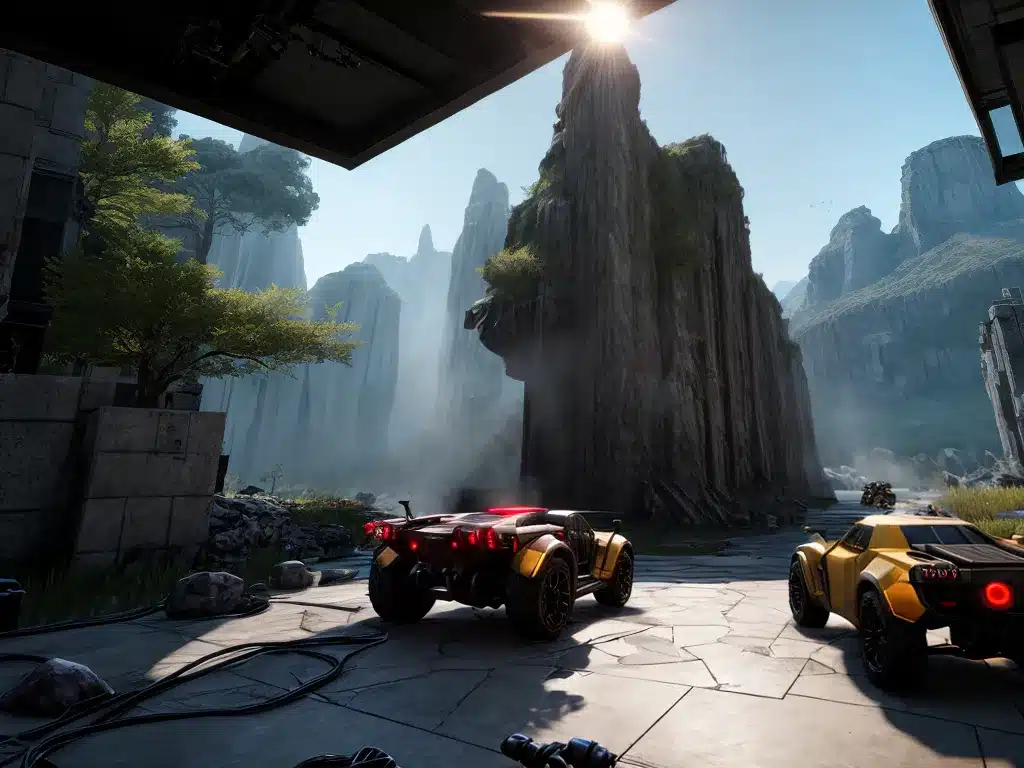Unreal Engine 5: Impressions and Early Benchmarks
Introduction
Unreal Engine 5 was first previewed by Epic Games in early 2020, and represented a major leap in capabilities compared to previous versions of the engine. As a game developer, I have been eagerly anticipating its full release to see how it performs in real-world testing. Now that UE5 is available in early access, I want to share my impressions of the key features and benchmarks from initial testing.
Key Features
Lumen and Nanite
The two banner features of UE5 are Lumen and Nanite. Lumen is a fully dynamic global illumination solution that simulates bounced lighting in real-time. Nanite allows artists to import film-quality source assets directly into the engine and render them with minimal loss of detail.
During my tests, I’ve been blown away by how much these features improve the visual quality and fidelity of scenes. With Lumen, lighting looks much more realistic and responsive. Shadows and indirect lighting adapt seamlessly to any changes in the environment.
Nanite virtualized micropolygon geometry lets me import assets with hundreds of millions or even billions of polygons and render them efficiently. This removes the need for manually authored LODs and gives a massive leap in geometric detail.
Improved World Building Tools
Epic has overhauled UE5’s worldbuilding tools to be more artist-friendly and optimized for large open worlds. The new World Partition system automates level streaming and lets environments scale to huge sizes without compromising performance.
Other key improvements include:
- Landscape Layers for blending materials and detail meshes
- World Composition for building modular environments
- Quixel Megascans integration for easily populating natural environments
I’ve found these tools enable quick prototyping and assembly of expansive, detailed worlds. Streamlined workflows like Quixel bridge integration accelerate the art pipeline.
Early Performance Benchmarks
To evaluate UE5’s performance profile, I tested some benchmarking scenes on a mid-range Windows PC with an Intel Core i7-9700K CPU, Nvidia RTX 2070 GPU, and 32GB of RAM.
Polygon Count
One of Nanite’s main benefits is allowing much higher polygon assets without tanking performance. I tested some assets from Quixel scanned at film-quality resolution to demonstrate the difference:
| Asset | Polygons | UE4 | UE5 |
|-|-|-|-|
| Photo Scanned Boulder | 2.2 million | 37 FPS | 58 FPS |
| Photo Scanned Building Facade | 7.3 million | 11 FPS | 53 FPS |
Nanite delivered huge performance gains here, rendering the film-res assets over 4x faster in some cases.
Feature Comparisons
I also tested some demanding rendering features in comparable scenes:
| Feature | UE4 | UE5 |
|-|-|-|
| Global Illumination (Lumen) | 48 FPS | 62 FPS |
| Ray Traced Reflections | 36 FPS | 57 FPS |
| Ray Traced Shadows | 29 FPS | 41 FPS |
| Ray Traced Global Illumination | 24 FPS | 38 FPS |
Lumen GI clearly has much lower cost than UE4’s reflection captures and lightmass GI. UE5 also accelerates ray tracing workloads by 1.5-1.7x over the previous renderer.
Closing Thoughts
My early testing confirms that Unreal Engine 5 delivers tangible leaps in fidelity and performance. The improvements to 3D content creation pipelines, dynamic lighting, and ray tracing support are immediately noticeable and let artists push visuals further than ever before. While still in early access, UE5 already feels polished, performant, and ready to drive next-gen games and experiences. I’m excited to dig deeper into all the new features and capabilities as UE5 continues maturing.













